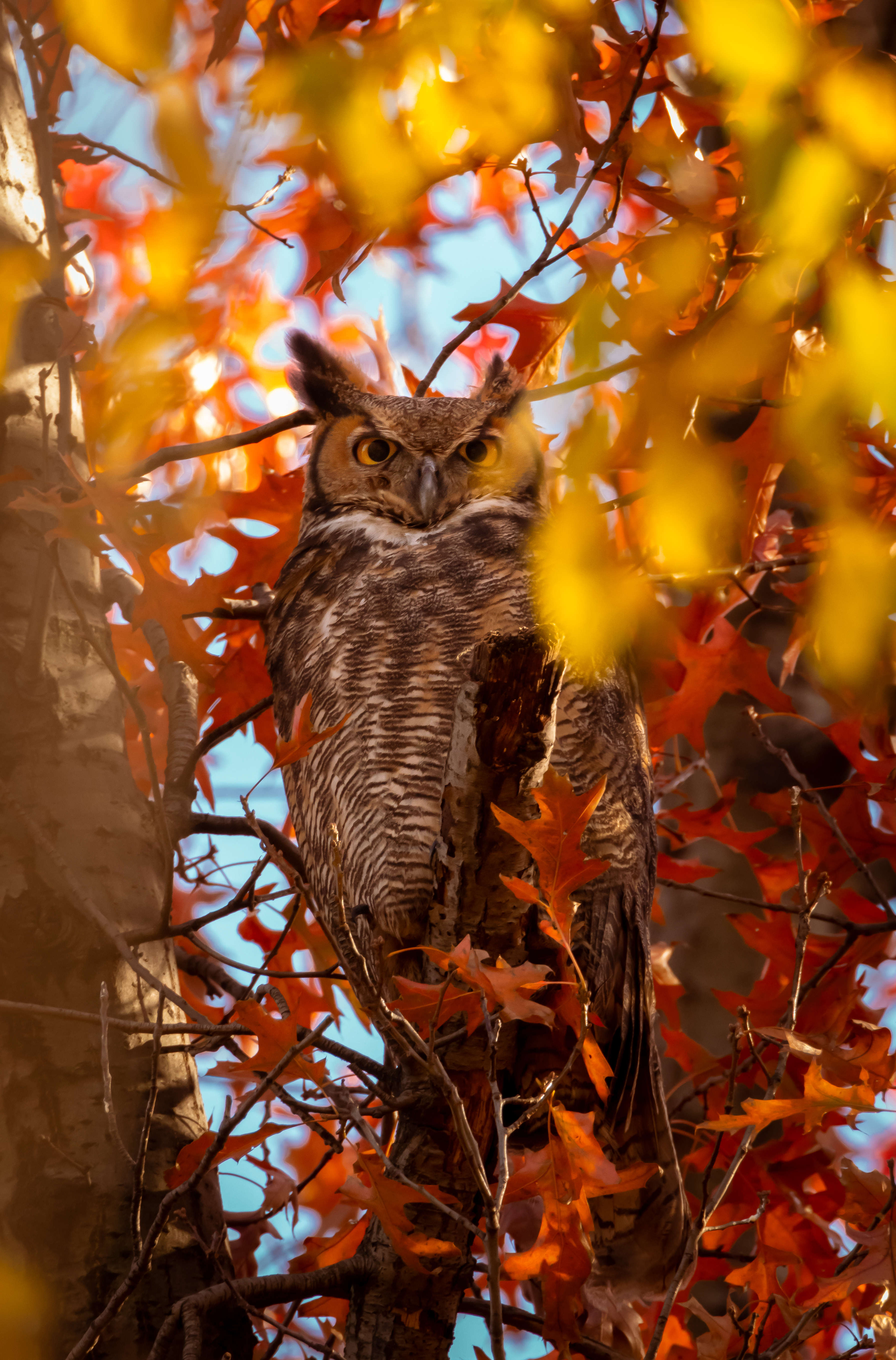September 28, 2023 at 9:24 pm
Travelers come from around the world each fall to visit our state during what is arguably the most spectacular season to enjoy the Maine outdoors. It’s easy to be lured in by the promise of landscapes decorated in festive fall foliage and refreshing sweater weather paired with warm pumpkin spice treats. But a patient look beyond the eye-catching leaves reveals the magnificent migrations and tremendous transformations of wildlife, truly magical moments of Maine in autumn.
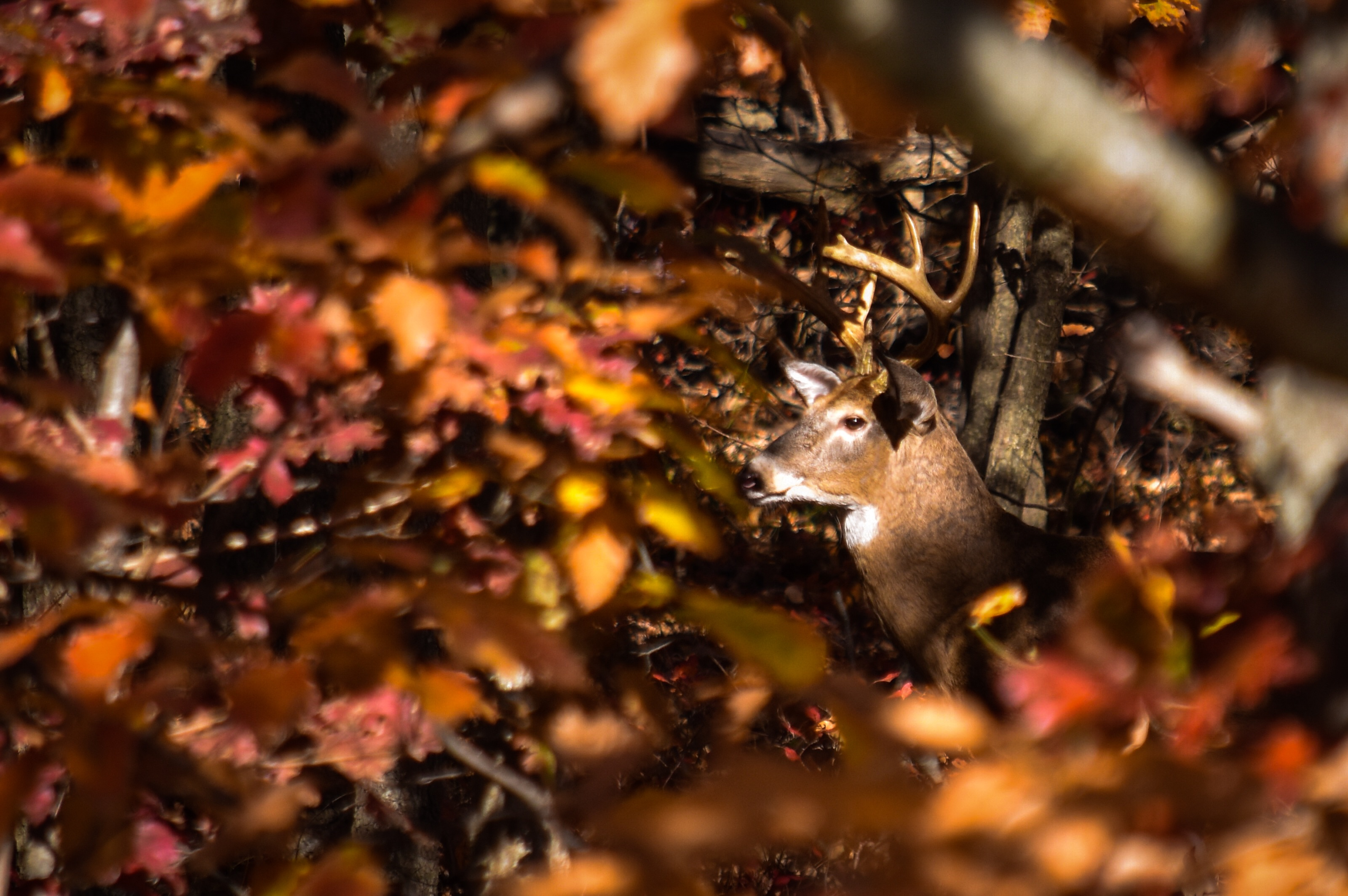
Magnificent Migrations
Migrants will head south, and leaves will fall, but autumn is the season of change, not of loss. Countless birds, bats, and insects take to the sky on a daunting journey, sometimes over oceans, sometimes by the stars, always risking it all for winter survival. After filling our spring and summer with color, melody, and dance, fall migration can feel like a lonely departure of old friends. But if you know where and when to look, you’ll witness fantastic farewell displays, spot surprising voyagers, and welcome winter visitors.
Bon Voyage
We are in peak raptor migration season, the best time to witness one of nature’s most mesmerizing aerial displays- kettles of migrating hawks.
In Maine, broad-winged hawks steal the show with overwhelmingly large kettles, a delicately choreographed vortex of raptors, sometimes hundreds or even thousands strong. The birds, almost never flapping, circle upwards with apparent weightlessness, gaining altitude on rising thermals. From great heights they then take a free ride, gliding toward the next thermal. It’s an almost hypnotic spectacle for viewers bidding farewell from summits and ridges below, and an efficient method of migration to Central and South America for broad-winged hawks.
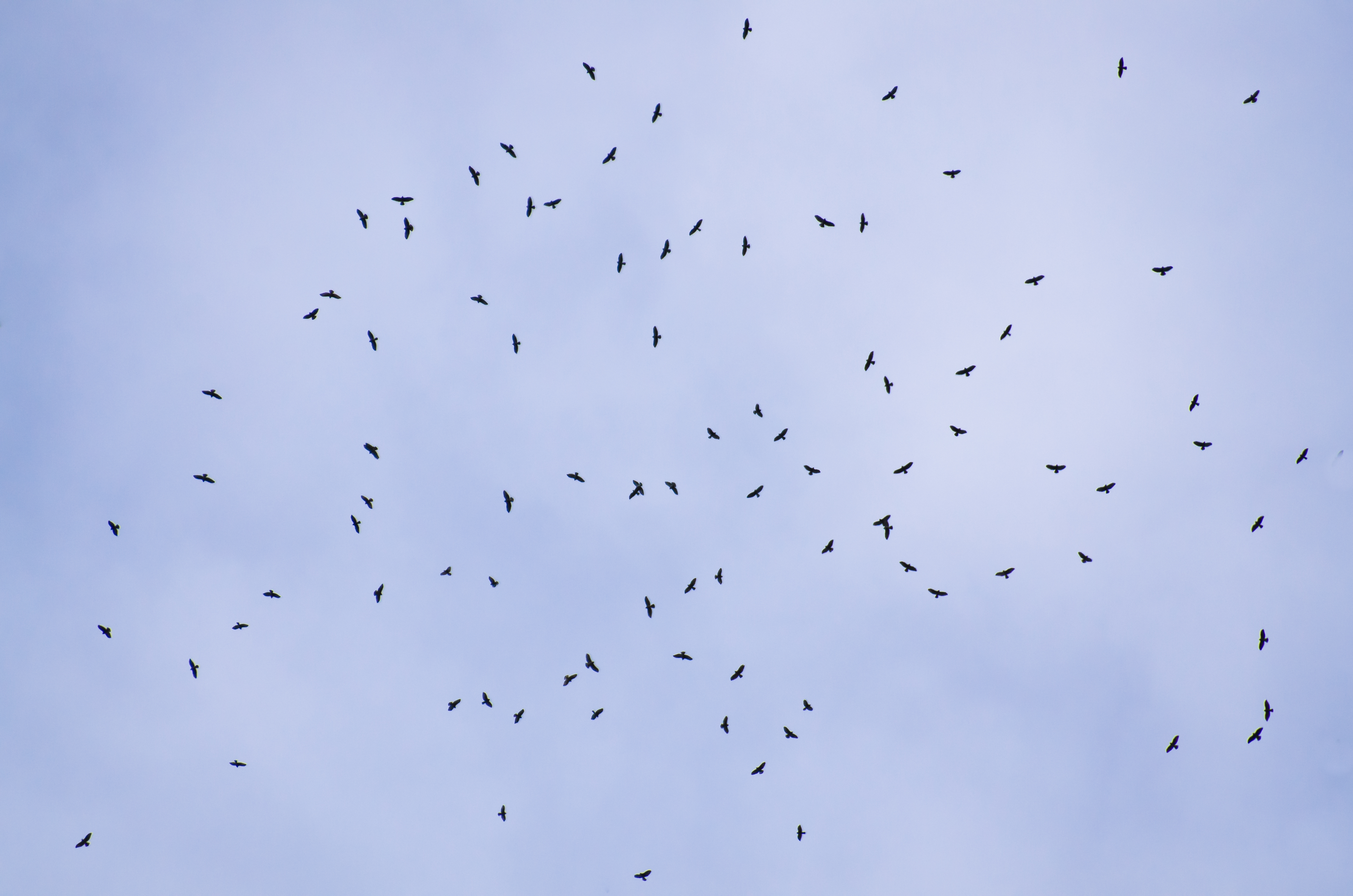
Passing Wave
Fall is a chance for Maine residents to go beyond the common backyard birds on their checklist and observe something new! Some migrants breed north of Maine and winter south of Maine, briefly passing through during migration, giving enthusiastic birders a seasonal treat, and a brief snapshot of the wildlife diversity found in other areas of the world.
Semipalmated sandpipers arrive in huge flocks at stopover sites during their prolonged passage from arctic breeding grounds to South America wintering grounds. Many stunning warblers travel by night but make early morning coastal appearances when they stop to rest and refuel. White-crowned sparrows are a classic example of a passage migrant, only visible for a couple of weeks in Maine as they travel south from northern Canada and Alaska. There are numerous birding hotspots in Maine, but if you’re looking for a birding adventure of a lifetime, it’s hard to beat Monhegan Island during fall migration.
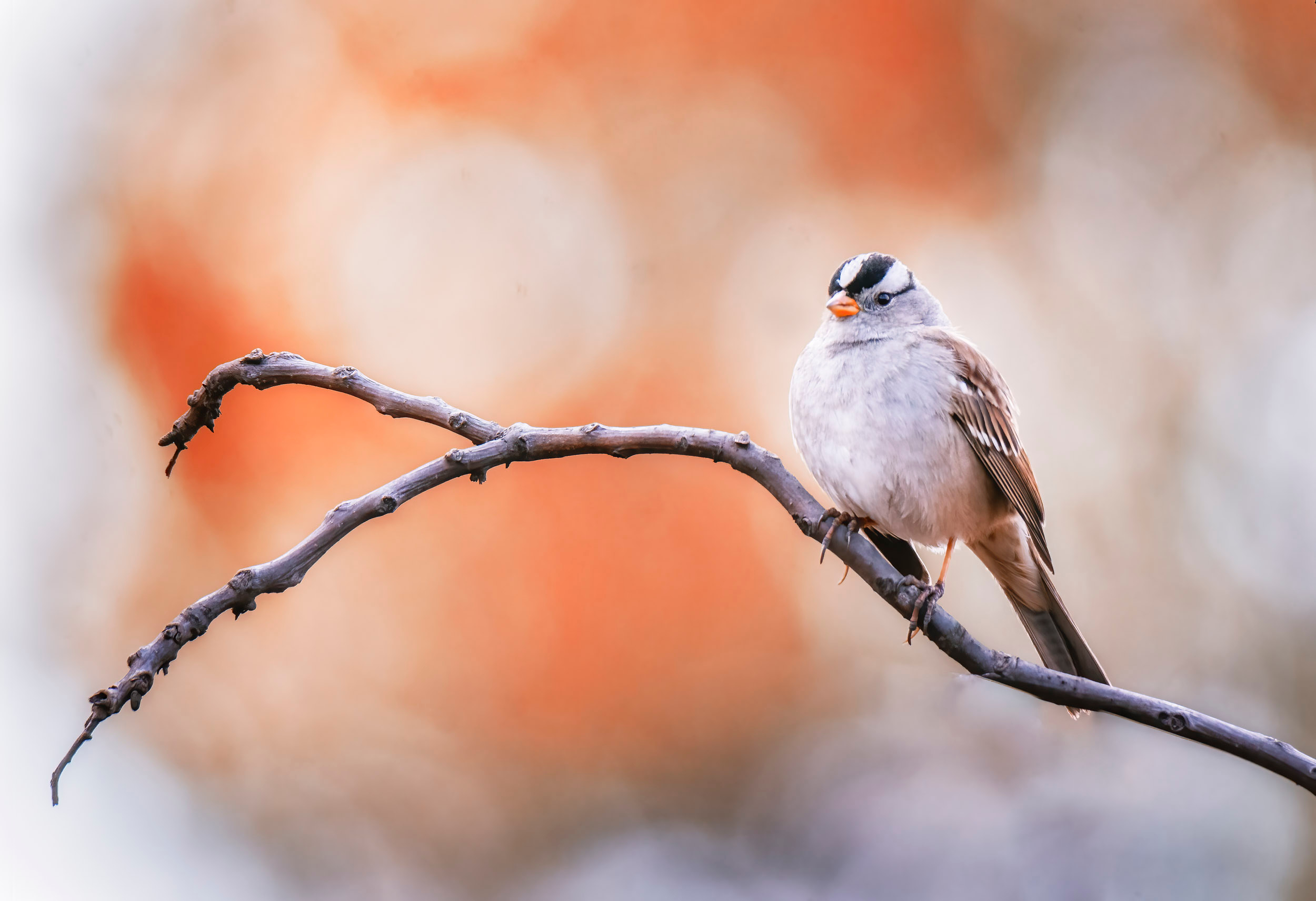
Warm Welcome
While we say bon voyage to many species, and watch others pass through briefly, fall is also a time to welcome the arrival of true snowbirds. To some species, Maine’s long cold winters are practically a tropical getaway compared to their arctic breeding grounds. You know you live far north when fall migration southward lands you in Maine! Snow buntings, rough-legged, lapland longspurs, and purple sandpipers, are just a few species to keep an eye out for as winter approaches. These birds have fortitude in spades. Winter is part of their identity, much like most Maine residents, and watching them when the snow begins to fall is a reminder of the joy to be found in the Maine outdoors year-round.
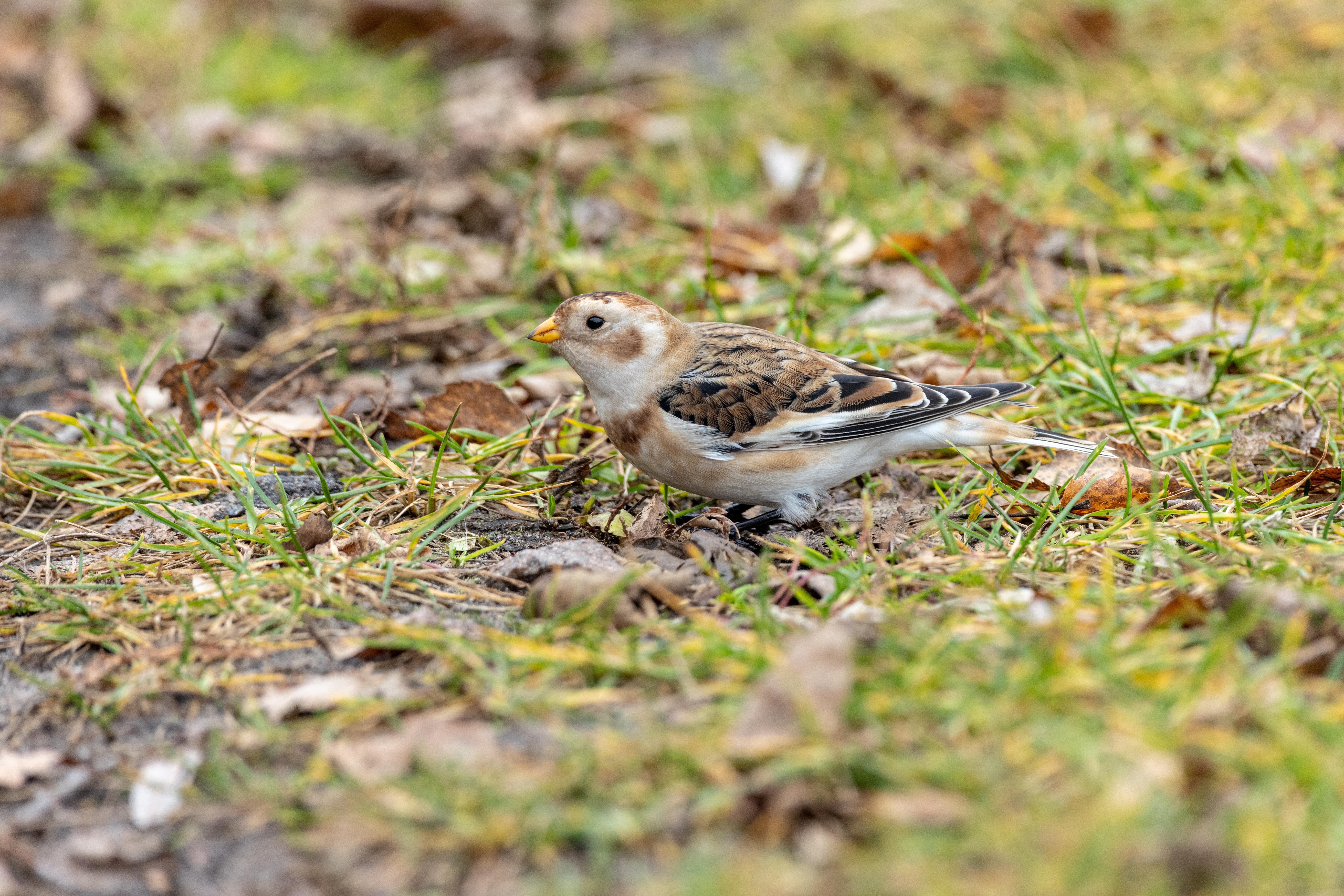
Tremendous Transformations
When days get shorter and temperatures dip, we look to the leaves for a signal that fall has arrived. We break out our sweaters and boots, crave delicious seasonal dishes, and may even bring out festive fall décor or take part in autumn activities. We change alongside the seasons.
Many wildlife transformations follow the same metronome. Astonishing synchronies within ecosystems play out right before our eyes and do so perhaps most brilliantly in fall.
Iconic Maine Moose
A bull moose exhibiting his prominent crown of palmate antlers in silhouette against of a backdrop of glowing deciduous hillsides is about as picturesque a view as one can hope to observe. It’s a quintessential Maine experience to encounter the icon of northern forests, and there’s no better time to appreciate the majesty of moose than fall.
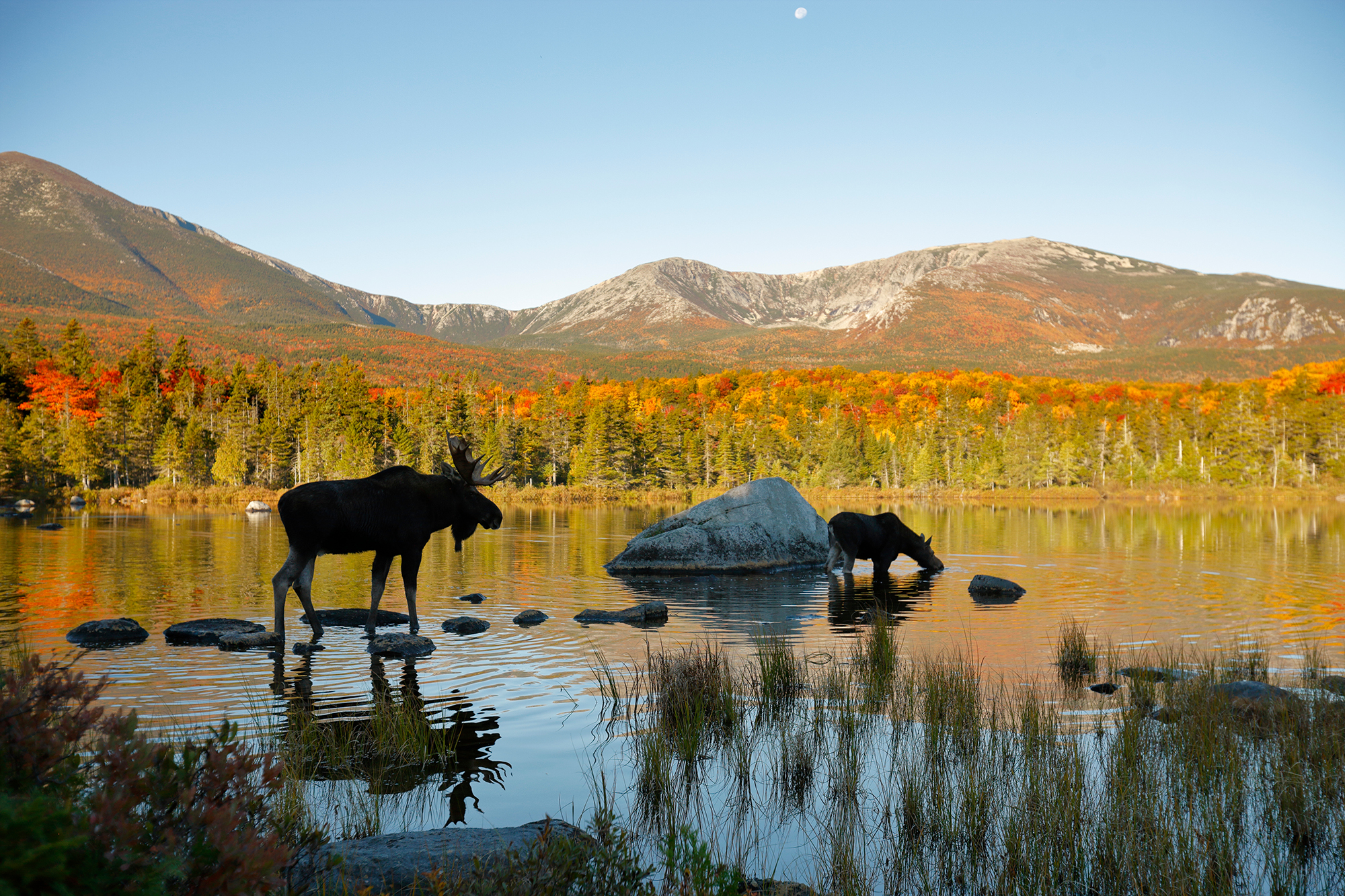
Bull moose do not carry their heavy antlers year-round. Under the cover of nutrient-supplying velvet, antlers grow at an alarming rate throughout spring and summer. They are one of the fastest growing tissues of any animal! In September a bull’s testosterone surges leading up to the breeding season, also called the rut. This causes their velvet to shed, revealing their intimidating bare antlers just as leaves drop to the ground and expose bare tree branches beneath. Their antlers will demonstrate their dominance and protect them as they endure head-to-head spars to compete for female moose (cows) and territories. When the rut is over, there’s no need for a moose to carry the burden of a heavy pair of antlers. By early winter, antlers are shed, scattering relics of autumn across the newly snow-covered landscape.
Cherished Charr
The dazzling colors of fall foliage that reflect off glassy ponds are also replicated beneath the water’s surface in an aquatic world of colorful transformations. When fall arrives, several fish make a striking wardrobe switch, sporting brilliant palettes of orange for spawning season. While brook trout are treasured for their spotted sunset-like gradient, it’s the arctic charr that has the most jaw-dropping radiance. Spawning male charr have a commanding presence, with their massive underbite and shockingly orange scales. Maine has the only intact native population of arctic charr in the lower forty-eight, and like other salmonids, they are protected during the fall spawn. Starting October 1 each year many waters are closed to fishing, so be sure to review Maine’s fishing laws before casting a line for a vibrant catch.
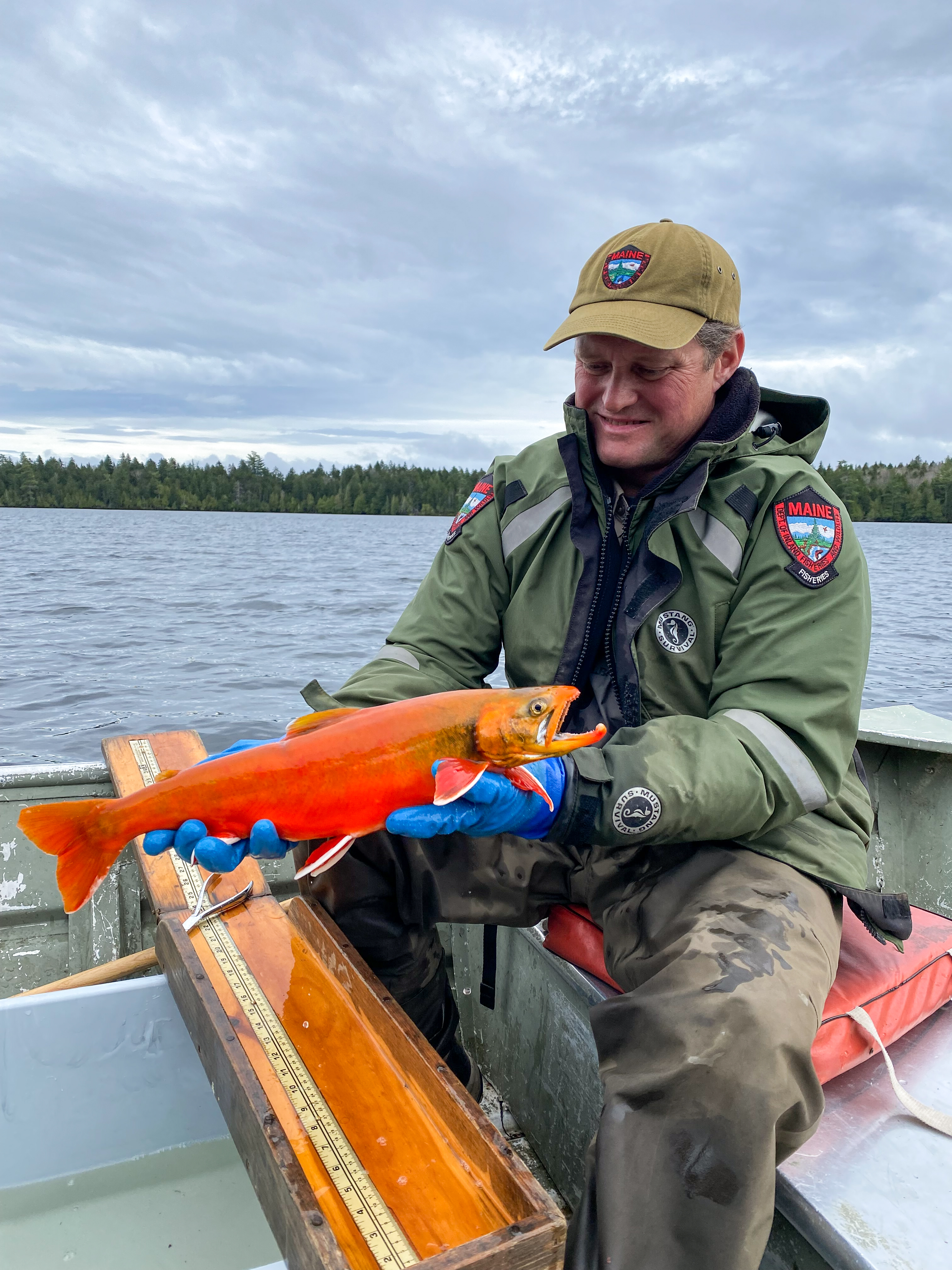
Falling for Autumn in Maine
Whether you are leaf-peeper visiting Maine for the first time, or a resident interested in learning more about the natural world around you, we encourage you to enjoy the view but also take the time to notice all the other wild phenomena that occur in autumn in Maine. The migrations and transformations mentioned here are only a few examples of the countless wonders to be discovered. From beavers collecting food to store under the ice and squirrels caching nuts before the snow falls, to increased hooting of great-horned owls and dispersal of newly independent juvenile coyotes, fall brings a flurry of activity across the state. The more you explore outdoors the more you’ll see if you’re willing to look beyond the leaves.
